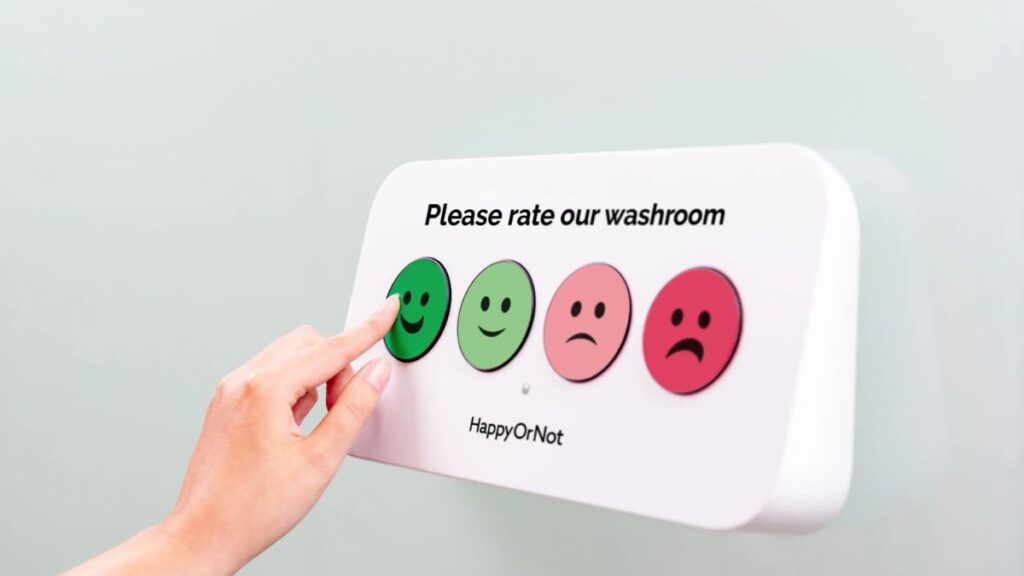Key Takeaways:
- Discover how smiley face surveys simplify customer feedback collection.
- Learn about the psychological influence of smiley faces on response rates.
- Explore proven methods for utilizing survey data to enhance customer experiences.
Table of Contents
Introduction to Smiley Face Surveys
In today’s digital landscape, businesses face the challenge of capturing sincere customer feedback in an era overwhelmed by information. By utilizing universally recognized symbols like smiley faces, these surveys simplify the feedback process, tapping directly into the emotions and opinions of users. Unlike traditional surveys that might intimidate with lengthy questions, smiley face surveys encourage spontaneous and genuine responses, making them a favored approach across multiple sectors, from retail to technology.
The beauty of smiley face surveys lies in their simplicity and adaptability. Regardless of size or industry, businesses can seamlessly integrate these surveys into their feedback systems. This method not only streamlines the data collection process but also enhances the quality of insights gathered. In an era where understanding customer sentiment is crucial, leveraging such intuitive tools can significantly improve overall client satisfaction and business growth.
The Psychology Behind Smiley Face Surveys
Emojis have infiltrated digital communication globally, serving as a universal language that transcends cultural and linguistic barriers. The appeal of emojis in smiley face surveys is deeply rooted in their emotional resonance. One of the most straightforward yet effective methods gaining traction is the emoji smiley face survey. Smiley faces evoke positive feelings among respondents, increasing the likelihood of survey completion. Their use in surveys simplifies the emotional expression for users, allowing them to convey complex emotions through simple symbols.
The psychological impact of positive imagery must be noticed. Research indicates that when individuals are exposed to positive stimuli, such as smiley faces, their engagement levels rise. This phenomenon, in turn, makes them more inclined to participate in activities like surveys. Therefore, businesses implementing these visual elements in surveys can expect enhanced interaction and a better quality of feedback, facilitating higher response rates and more actionable data.
Increasing Response Rates with Visual Feedback
Incorporating visual elements such as emojis into surveys can significantly enrich the user experience, turning what might otherwise be a mundane task into an engaging activity. The efficacy of visual feedback tools can be traced back to the psychology of emojis, which suggests that visuals can amplify participant involvement. By providing users with an easy and relatable way to express their opinions, smiley face surveys dismantle the barriers often posed by traditional feedback methods.
This approach is particularly beneficial in customer-focused environments where businesses aim to gather maximum feedback without wasting the user’s time and patience. The visual appeal of emojis draws respondents in, making them more invested in sharing their thoughts honestly and swiftly. As a result, companies using these methods often report higher completion rates, allowing them to gain richer insights into customer experiences.
Collecting Feedback in Real-Time
The immediacy of data collection provided by smiley face surveys is transformative for businesses seeking to adapt and respond swiftly to customer needs. Receiving real-time feedback allows businesses to make timely adjustments, preserving customer satisfaction and loyalty. This capability is crucial in fast-paced industries where consumer preferences change rapidly and unexpectedly.
Imagine a restaurant chain that implements smiley face surveys at the end of a meal. Instantaneously receiving feedback on service quality or food offerings enables them to address issues promptly. This level of responsiveness enhances customer experiences, and fosters trust and loyalty, as customers feel their opinions are valued and acted upon.
Designing Effective Smiley Face Surveys
Creating surveys that accurately capture customer sentiments requires a thoughtful approach to design. Effective smiley face surveys keep the process straightforward while maintaining the potency of the feedback collected. These surveys should employ user-friendly visual elements that encourage participation and retention.
Crafting Questions That Matter
The crux of any successful survey lies in the questions posed. A well-crafted question can significantly influence the quality of responses received. Survey questions must remain clear and focused, ensuring they reach straightforward, actionable insights. Simplicity should not come at the cost of substance; instead, questions should prompt users to reflect on their experiences and provide honest feedback.
Practical examples include using direct language and avoiding jargon. Keeping the number of questions to a minimum can also prevent participant fatigue and increase the likelihood of survey completion.
Leveraging Data for Customer Satisfaction
Collecting feedback is only the first step; the real value lies in leveraging this data to drive improvements. Analysis of the data gathered from smiley face surveys can give businesses insights into customer preferences and pain points. As highlighted by a Harvard Business Review article, strategic data utilization can propel customer service initiatives forward, making organizations more responsive to their clientele.
Companies can use advanced analytics to draw patterns and correlations from the feedback data, pinpointing areas for enhancement. Implementing changes based on these insights caters to customer aspirations and sets businesses apart in competitive markets, fostering long-term customer loyalty and business growth.
Real-World Applications and Success Stories
Several companies have successfully integrated smiley face surveys into their feedback systems, witnessing tangible improvements in customer relations. For instance, a large retail chain utilized these surveys to gauge customer satisfaction across various regions. The immediate feedback allowed them to standardize service quality, leading to higher customer satisfaction scores.
An analysis of these success stories reveals common success factors, including reflective feedback processes and timely responsiveness. By focusing on customer feedback, these organizations improved their services and enhanced their market reputation as customer-centric entities.
Future Trends in Feedback Collection
The future of customer feedback collection is set to undergo significant transformations, with emerging technologies paving the way for newer methodologies. Personalized surveys, driven by artificial intelligence and machine learning, are becoming increasingly prevalent. These advancements allow surveys to adapt to real-time customer interactions, providing more tailored and meaningful insights.
As these technologies evolve, incorporating smiley face surveys will likely become more nuanced, offering deeper insights and dynamic feedback mechanisms. The continual evolution of consumer preferences will necessitate adaptive and innovative survey methodologies, ensuring businesses remain agile and responsive to the ever-changing market landscape.



